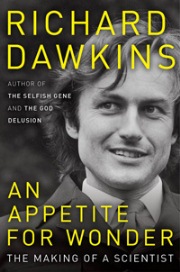‘Twitter Thinking’ in Tech Writing
Posted on July 26, 2013
Filed Under Communication, Technology, The Writing Life | Leave a Comment
 My Encore colleague (and proprietor), Dennis Owen, has come up with a neat concept to trim up technical writing – apply a little “Twitter technique” to documentation. Twitter on documents? Come on…but wait, what’s he getting at?
My Encore colleague (and proprietor), Dennis Owen, has come up with a neat concept to trim up technical writing – apply a little “Twitter technique” to documentation. Twitter on documents? Come on…but wait, what’s he getting at?
“Yesterday I was editing a procedure from one of my colleagues (at a company Dennis is currently working at) and he had some bullets in a long list of an organization’s responsibilities, like:
- Perform system troubleshooting
- Completing required surveillances
- Equipment repairs and replacements
- Creating backup copies by copying plant equipment files
Some might say this is trim enough. But wait, if we give the list a “Twitter touch,” here’s what Dennis suggests it might look like:
- System troubleshooting
- Surveillance
- Repairs and replacements
- File backup
This is what an old city editor of mine would have called “tight writing,” and it’s a definite improvement in reading efficiency. But who has a city editor anymore? Instead, a Twitter-like technique is worth keeping in mind. Yes, a character count, figuratively speaking. There are 129 characters (or so) in the first list and 62 (or so) in the second. Both are within Twitter’s 140-character limit, but which is more efficient to read, and probably remember? Clearly, the second.
We’re not recommending that you count the characters in everything you write – that would be daunting. But if you picture yourself as tweeting, rather than merely writing, maybe my old city editor enters your ken, and that would be a blessing, indeed! Over time, your writing will be immeasurably improved – that is, will become clearer and more efficient to read.
So, the next time you tackle a technical document, get up there on a power line and tweet on! Your writing and, your readers’ grasp of whatever procedure is involved, will be energized. Truly. – Doug Bedell
Hey, Techie, Pretend You’re On Twitter Posting Clearly
Posted on July 1, 2013
Filed Under Communication, Technology, The Writing Life | Leave a Comment
Gee, it occurs to us that the same approach can be used for technical writing that’s recommended in this Business2Community blog post for social media writing. Really? Sure. We’re not talking about the quirky, abbreviated style of social media writing, just simple, straight-out expression.
 “Writing in plain English,” the post begins, “means writing in a simple and straightforward manner that lets you reach the widest possible audience.” With technical writing, of course, you’re not necessarily trying to reach a particularly wide audience (unless you’re writing a computer manual), but you want to “avoid technical jargon…” anyway. You’ll likely need to be using specialized vocabulary, but good writing is good writing, wherever it’s found – clear, direct, and usually to the point.
“Writing in plain English,” the post begins, “means writing in a simple and straightforward manner that lets you reach the widest possible audience.” With technical writing, of course, you’re not necessarily trying to reach a particularly wide audience (unless you’re writing a computer manual), but you want to “avoid technical jargon…” anyway. You’ll likely need to be using specialized vocabulary, but good writing is good writing, wherever it’s found – clear, direct, and usually to the point.
Bear in mind that, while writing for social media is thought of as aimed at the youngest device owners, “older” can, in fact, be anyone over 30. They weren’t brought up or trained on abbreviations and foreshortened words and expressions.
There’s not a whole lot of difference between writing for the general public and for users of technical manuals or instructions. We’re all humans who appreciate being taken seriously. Should you be too casual with language, B2C notes, “People may conclude that you are equally casual with your customer service or quality control.” There it is – technical writing equated with customer service! An appropriate pairing, indeed.
Writing concisely, Brian Scott, the B2C writer, notes doesn’t mean turning out hamburger. His direct, perfectly acceptable alternative (real words) sentence for a Twitter tweet has only 81 characters. It’s not necessary to play “stump (or entangle) the reader,” online or off, after all.
It’s certainly possible that social media writing can become too breezy for its own good, but so far, it’s really quite functional. So is the best technical writing. Remember that the next time you’re scanning Facebook before turning to your day’s paid writing rounds. – Doug Bedell
How’s that? ‘Emotionally Satisfying’ Procedure Writing?
Posted on June 12, 2013
Filed Under Business, Communication, Technology | Leave a Comment
Imagine viewing technical writing as “an emotional experience.” Larry Kunz does just that, but he doesn’t propose approaching a technical manual or document as a potboiler. What he means is producing technical writing that elicits “a feeling of trust,” and that’s right on the mark. Good technical writing should produce a feeling of confidence in its utility.
Think of the times when you’ve been frustrated by obscure or meandering directions. The only emotional reaction they likely produced was annoyance, and who needs that?
Kunz is a product manager and information architect with SDI, a global consulting firm. “Technical writing,” he advises, “exists to help someone perform a task or gain some knowledge.” Indeed, good technical writing should elicit feelings of accomplishment. You should be able to trust a manual or procedure to get you efficiently to a desired result. That feels great when it happens!
Our Encore owner and colleague, Dennis Owen, notes, however, that emotionally satisfying technical writing can be hard to produce when it has to be based on a prescriptive writer’s guide or on satisfying numerous reviewers “who don’t necessarily place the reader’s interests uppermost.” Yet technical systems don’t exist for themselves, but for those assigned to operate and maintain them. Why make work-life a downer for the users?
 Illustrations can help. Dennis recalls when he once added sidebars to a technical report on bar coding he wrote “on various things I’d discovered when researching the topic. For example, bar codes began in the railroad industry, as big symbols on the sides of rail cars so that trackside readers could track cargo. Also, bar code-like symbology is actually quite old. The bars and dashes on the South Korean flag, for example, convey a message and hark back to a very old way of communicating. As I recall, though, none of my sidebars made it to the final printed document.” Too bad. Illustrative material can highlight and hasten understanding of a process.
Illustrations can help. Dennis recalls when he once added sidebars to a technical report on bar coding he wrote “on various things I’d discovered when researching the topic. For example, bar codes began in the railroad industry, as big symbols on the sides of rail cars so that trackside readers could track cargo. Also, bar code-like symbology is actually quite old. The bars and dashes on the South Korean flag, for example, convey a message and hark back to a very old way of communicating. As I recall, though, none of my sidebars made it to the final printed document.” Too bad. Illustrative material can highlight and hasten understanding of a process.
“Customers,” Larry Kunz notes, “are willing to read technical content when they trust it to be helpful. Granted, many readers will sooner trust other readers than the ‘official’ company documentation.” Hence the rise of online forums.
Yet when an employee is in a plant or other workplace setting with a technical manual or procedure in hand, he or she wants it to be revealing, not puzzling. The satisfaction of success is a highly emotional reward for work done well, by the writer and reader alike. – Doug Bedell
Writing With the Universe in Mind
Posted on June 3, 2013
Filed Under Communication, Technology | Leave a Comment
It would have been great to have attended the “A Day of Dialogue” discussion that was held recently by Library Journal on science writing. It featured Richard Dawkins (The Selfish Gene), Dave Goldberg (A User’s Guide to the Universe) and Simon Winchester (The Professor and the Madman) on “The Art of Science Writing.”
 Dawkins encouraged science writers to write with respect for the language itself, “to listen to the cadence of words that best express what the writer seeks to describe.” (His memoir, An Appetite for Wonder, will be available this fall.) Goldberg explained how “he feels the necessity, even an obligation, not to steer his readers far away from their inherent sense of wonder at the universe, and at all that remains unknown.” And Winchester, along with Dawkins, “noted more than once that science is not merely useful; it is ‘poetic.'”
Dawkins encouraged science writers to write with respect for the language itself, “to listen to the cadence of words that best express what the writer seeks to describe.” (His memoir, An Appetite for Wonder, will be available this fall.) Goldberg explained how “he feels the necessity, even an obligation, not to steer his readers far away from their inherent sense of wonder at the universe, and at all that remains unknown.” And Winchester, along with Dawkins, “noted more than once that science is not merely useful; it is ‘poetic.'”
Of course, these three prominent science writers have broad, general audiences, rather than colleagues in a workplace who have to accomplish specific tasks safely. They write as much about the unknown as the known. They are science “popularizers,” bless them, and aren’t writing, basically, for fellow team members. Yet, beyond clarity, there is something definitely to be gained by viewing workplace compatriots as though they are fascinated by the process you’re describing, not merely rendering. That needn’t add a lot of extra words; but it does imply being mindful of how your process connects with others in a sequence that enables a system – power generation or some other form of industrial production, for example – to unfold safely and efficiently.
You don’t want to envision yourself writing for a broad audience when you’re polishing off an operational procedure or some other form of technical instructions. But you do want to write clearly and efficiently enough that you catch and hold the interest of fellow workers in executing a procedure safely and efficiently. That’s not necessarily an assured outcome, but it can be made more-so by economical and effective writing.
Procedural writing needs to be as engaging, in its own terms, as a meditation on the universe. – Doug Bedell
When Twirling a Yo-Yo Becomes an Art
Posted on May 7, 2013
Filed Under Communication, The Writing Life | Leave a Comment
Here’s a young man we know nothing about except that his name is Black, just that, and can he handle a yo-yo! First one yo-yo, then two of them together. He’s thrilled a TED audience and, now us, watching that performance. So what’s there about a yo-yo that’s so awesome? It’s not the yo-yo itself, two half spheres with a string tied around their axis peg. (At least that’s how my yo-yo was set up when I was a kid.) It’s the skill that brings it the level demonstrated by Black, who’s twice become a world yo-yo champion.
 Skill honed by dedication. That’s at the heart of any craft mastery. At 14, Black got a yo-yo, discovered he enjoyed twirling it and, 10,000 hours of practice later, became a world yo-yo champion. Now he brings the TED audience to its feet demonstrating his skill in handling two yo-yos at once.
Skill honed by dedication. That’s at the heart of any craft mastery. At 14, Black got a yo-yo, discovered he enjoyed twirling it and, 10,000 hours of practice later, became a world yo-yo champion. Now he brings the TED audience to its feet demonstrating his skill in handling two yo-yos at once.
Trivial? Maybe twirling a yo-yo, sending it “round the world” or putting it to “sleep” like I did as a kid, is pretty trivial. (Dennis Owen recalls “walking the dog” and “rocking the cradle” as well.) But whatever you’re doing, sufficient practice at perfecting technique can bring it all the way to the level of art. You’ve got the interest, or you wouldn’t be doing that much practicing. So toning up the brain and muscles to be a champion at whatever enthralls you becomes the challenge.
Watch Black whisk a cloth from beneath a vase of flowers with his yo-yo. Admire his total setting, which is stagecraft along with yo-yo twirling. Note how he keeps the Ted audience intent on what he’s doing. Altogether, it’s spell-binding. That’s what 10,000 hours of practice did for one young man with a couple of yo-yos and the will to wield them well, very well indeed. – Doug Bedell
Daunted by a TV Manual that Shouldn’t Exist
Posted on April 29, 2013
Filed Under Communication, Technology | Leave a Comment
 From New Zealand comes word that our ordeal with the manual for our Toshiba DVD Video Player/Video Cassette Recorder isn’t unique. Lots of manuals aren’t written clearly or well. Don’t they know that qualified technical writers are available for those assignments? Writing about Digital Living, Abbie Napier introduces us to Emma Harding (pictured), a technical writer who is hired “to reduce, simplify and streamline.”
From New Zealand comes word that our ordeal with the manual for our Toshiba DVD Video Player/Video Cassette Recorder isn’t unique. Lots of manuals aren’t written clearly or well. Don’t they know that qualified technical writers are available for those assignments? Writing about Digital Living, Abbie Napier introduces us to Emma Harding (pictured), a technical writer who is hired “to reduce, simplify and streamline.”
Hasn’t Toshiba heard that such blessed folks exist, all around the world?
“You have two choices:,” Abbie writes, “Throw the remote on the floor in disgust and leave the programme guide in German, or perservere with a manual which may as well be written in latin (actually, that should be a capital “L”). A useless manual, help function, website or document is both infuriating and stressful.”
Indeed it is. The question, however, is how do such botched jobs of consumer relations technical writing ever get out the door? Doesn’t the manufacturer responsible for such travesties care? Do obscure manuals represent a crisis of public relations before one of technical writing? These are questions of our age, and it’s a shame to have to ask them.
More attention should be given, actually, to documents going to consumers than those being prepared for workers in the technical settings from which they originated. But are those relatively esoteric precincts the only places where technical writers are deemed necessary? Do they even have them all the time there? We’re talking about truly professional technical writers, technicians with the blessed ability and accompanying conscience to care deeply that their instructions will be readily understood and who know how to bring that about?
Emma Harding, it turns out, has a degree in linguistics. That’s great, but it may actually be overkill. What matters most in the craft of writing to be understood is the conscience to put yourself in the a relatively innocent reader’s shoes, to be insistent to yourself and to your employer that you’ll be understood by such a reader. That’s a compulsion in empathy, actually, not so much a test of linguistic skill.
Toshiba apparently thought they’d wow us with pictures and diagrams. All they accomplished, though, was to bring a minefield alive. It’s the text, folks, simpe, orderly, start-to-finish, text that counts most. Toshiba didn’t understand where a new user would be starting, and we don’t fathom where they ended up. Somehow, we got a picture after putting the manual aside. But the ire remains. What company, of whatever nationality, would want its customers to feel that way?
“Unfortunately,” Amy writes, “not everything gets the technical writer once-over before it hits the public.” Maybe that’s what happened at Toshiba. But how could a company of its standing, indeed, any company, let that happen? Good technical writers ought to be seen as heroes and heroines of our times. Indeed, that identity should have been established at the start of the Industrial Revolution itself. Technology is worth very little if it’s not readily useable by the people it’s supposed to be serving.
Does that come as a revelation? It really shouldn’t. But check your own modern video recorder’s manual for readability. Do you wish you had a technical writer, or at this downstream point, a technical interpreter, in your family? You shouldn’t need one. Clear, readily readable instructions should be part of every 21st century sales package wherever you live. – Doug Bedell
Technical Writing in Shorter ‘Page Bursts’
Posted on April 5, 2013
Filed Under Communication, Technology, The Writing Life | Leave a Comment
With the Web being such a factor in communication now, it’s bound to be affecting where people turn for information, even technical information. “Web consults” are likely to be increasingly one’s first choice on where to look for information, of whatever degree of complexity. While this doesn’t apply as much to site-specific information, it’s likely to be influencing the formatting of technical writing, wherever it may be aimed.
 In this context, we’ve come across a blog, “Home of the Ryan,” a new blog whose writer, Ryan Pollack, has been in technical writing for nine years or so. He refers us to the blog “Every Page is Page One,” and that’s been an especially welcome discovery. This site’s proprietor, Mark Baker (shown here), has had 25 years in technical communication, including on the Web.
In this context, we’ve come across a blog, “Home of the Ryan,” a new blog whose writer, Ryan Pollack, has been in technical writing for nine years or so. He refers us to the blog “Every Page is Page One,” and that’s been an especially welcome discovery. This site’s proprietor, Mark Baker (shown here), has had 25 years in technical communication, including on the Web.
Baker seems to be saying that technical information is increasingly being formatted in short bursts, or page views. One doesn’t reach for an entire manual any longer so much as turn to the Web to find the topic or situation he or she needs help with. This depends partly on where you’re working, of course, but web-formatted materials are coming increasingly into use.
Information can be obtained more efficiently this way and thinking in terms of web pages rather than entire manuals has pertinent advantages. We’ll have to peruse further the implications of “every page being page one.” They have a lot to do with whether or not your technical writing is actually being posted on the Web. Increasingly, that’s likely to be so. Or maybe not. You wouldn’t want Google ushering people through sensitive areas of your plant.
Either way, the reality is that web formatting will increasingly be influencing formatting of all sorts. This means it’s likely to be shorter and crisper than before. And that’s a gain, if also something of a hazard when complexity arises.
Whatever your situation, here are two more places to hang around – “Home of the Ryan,” and “Every Page is Page One” – to get the feel of these new settings for technical communication. – Doug Bedell
‘Twinkies’ for Technical Writers, and Kids Rapped Up in Lyrics
Posted on March 21, 2013
Filed Under Communication, Education | Leave a Comment
This is only for kids in K-12 and their teachers, but it’s about, you might say, a form of technical writing, rap music. Turns out that The New York Times Learning Network has been holding an annual rap music-writing contest, and the 2012 winners were recently announced. We figure there will be another rap contest for 2013, so check for a Times’ listing around next November.
Meanwhile, Flocabulary, “an online learning platform that features educational songs, videos and resources for K-12,” has supplied a lesson plan and rubric for helping teachers guide their students “through the rap-writing process.” (These are from last year’s contest, but we doubt the methodology is changing all that much.)
 There’s a lot more scope, of course, in writing rap lyrics than technical procedures. The Times received 634 entries from 1,104 students, many of them participating in groups. “Many students mourned the possible loss of the Twinkie in their raps about the news of 2012,” The Times advises. Which led us to check on what actually happened there, and the buyers of the “snack cake” portion of the bankrupt Hostess Brands, Apollo Group Management and Metropoulos & Co., are aiming to have Twinkies back on the shelves by this summer. Something more to sing (chant?) about.
There’s a lot more scope, of course, in writing rap lyrics than technical procedures. The Times received 634 entries from 1,104 students, many of them participating in groups. “Many students mourned the possible loss of the Twinkie in their raps about the news of 2012,” The Times advises. Which led us to check on what actually happened there, and the buyers of the “snack cake” portion of the bankrupt Hostess Brands, Apollo Group Management and Metropoulos & Co., are aiming to have Twinkies back on the shelves by this summer. Something more to sing (chant?) about.
So spend the rest of 2013 burnishing up your rhythm and rhyming for this year’s rap music contest. You can have the staccato rhythms and would-be lyrics bouncing around in your head as you tour the plant on more pedestrian writing assignments. – Doug Bedell
What’s to be Read, With So Much to Read?
Posted on March 12, 2013
Filed Under Communication, Technology, The Writing Life | Leave a Comment
 Reading is important to writing, no less so if you’re a technical writer. Broad horizons and readiness of expression at whatever you write are greatly abetted by regular, indeed relentless, reading.
Reading is important to writing, no less so if you’re a technical writer. Broad horizons and readiness of expression at whatever you write are greatly abetted by regular, indeed relentless, reading.
It’s getting easier, and less expensive, than ever to become a self-priming reader. I, for example, have 30 either great or useful books on my iPad’s Kindle reader. From the Kindle store, they cost half, or less, than their hardbound price, and they can be underlined or annotated as though they have paper pages. I don’t know, for example, a bookstore at which I could have picked up William Zinsser’s “The Writer Who Stayed,” but it was available in an instant from the Kindle store. (Zinsser as a younger man and a writer for the New York Herald Tribune, knew my dad as a bank manager on Times Square and, when I was in high school, submitted for me a letter to the editor I had written that the Tribune published. This is meant not as any sort of disclaimer, but simply a formative memory.)
So as a regular writer (though in short, web-based takes), I was just a bit ago pleased to note consultant Kevin Eikenberry’s blog post on “Why You Should Read More Broadly and How to Do It”. Almost as I was just saying he writes, “Today there is far more quantity of reading materials (in more formats) available than ever before, and perhaps because of the proliferation and niche-ification (I know, I made up the word) of those materials, we read differently.”
One used to read mainly the classics. Today, Eikenberry notes, there’s a lot to read just in occupational categories and readers “would be hard pressed to keep up just in the strategy, leadership, management, change (or pick your sub genre) area alone.” So if you want to be a fully effective person nowadays, what’s to be read among all the choices available?
Eikenberry suggests several “food groups to add to what might be a bland, unbalanced and unhealthy personal reading menu.” Read fiction, he urges, “it gives your mind a break…” Read a classic, too, something you’ve always want to read, or have known you should. Read older books, “any master of a topic is a student of the past…” (Boy, is that true in these politically impacted times.) Read biographies, read history and read outside your industry. “…reading within your industry or discipline,” Eikenberry feels, “will never create a breakthrough idea.”
And read serendipitously, on the spur of the moment by picking up a new magazine at a newsstand or something a friend recommends. That way, surely, lies discovery, Eikenberry advises.
It all comes down to reading for surprise and self-enhancement. There’s more than ever readily available for profitable perusing, whether you’re in a technical field or not, so get at it, and stay with it. – Doug Bedell
George Saunders, a Writing Engineer
Posted on February 28, 2013
Filed Under Communication, The Writing Life | Leave a Comment
Now here’s a writer I want to get to know better. George Saunders has progressed from technical writing to the pages of The New Yorker and, now, his novel, Tenth of December, is No. 3, on The New York Times best seller list for fiction. Not bad for plugging away at saying well what you need to say, either for co-workers or the public.
 Saunders spoke recently at William & Mary College. A press release for that event quoted Junot Diaz, a Pulitzer Prize winner for fiction, as saying of him, “There’s no one who has a better eye for the absurd and dehumanizing parameters of our current culture of capital.”
Saunders spoke recently at William & Mary College. A press release for that event quoted Junot Diaz, a Pulitzer Prize winner for fiction, as saying of him, “There’s no one who has a better eye for the absurd and dehumanizing parameters of our current culture of capital.”
Now, did you ever think that all the quests for approval, after requisite revisions, that technical writers go through, one of them would rise to such an estate – “a better eye for the absurd and dehumanizing parameters” of our times? Just shows where conscientious diligence, and talent, can lead. You don’t want to be thinking absurdity as you walk, say, through a nuclear power plant. But if diligence in a workplace setting leads to skills and insights that spill into best-seller fame, so much the better.
Read more
Recently
- Presentations With Forethought
- Technical Writing’s Lineage – Surely It’s Deeper than Digital
- At the Holidays, Twitting Amazon
- Successful Cookie Baking – From Mom, an Acknowledged Expert
- Slides for a Tech Writer’s Craft
- Digital or Not, Be Clear
- Being Watchful About Digital Designs…
- When Proposals Don’t Click, Keep Making Them Anyway
- Like a Good Gardener, Help an Enterprise Keep Itself Current
- We’re Leaders All, And Need to Think That Way
Categories
Archives
- January 2017
- December 2016
- November 2016
- October 2016
- September 2016
- August 2016
- July 2016
- June 2016
- May 2016
- April 2016
- March 2016
- February 2016
- January 2016
- December 2015
- November 2015
- October 2015
- September 2015
- August 2015
- July 2015
- June 2015
- May 2015
- April 2015
- March 2015
- February 2015
- January 2015
- December 2014
- November 2014
- October 2014
- March 2014
- February 2014
- January 2014
- December 2013
- November 2013
- October 2013
- September 2013
- August 2013
- July 2013
- June 2013
- May 2013
- April 2013
- March 2013
- February 2013
- January 2013
- December 2012
- November 2012
- October 2012
- September 2012
- August 2012
- July 2012
- June 2012
- May 2012
- April 2012
- March 2012
- February 2012
- January 2012
- December 2011
- November 2011
- October 2011
- September 2011
- August 2011
- July 2011
- June 2011
- May 2011
- April 2011
- March 2011
- February 2011
- January 2011
- December 2010
- November 2010
- October 2010
- September 2010
- August 2010
- July 2010
- June 2010
- May 2010
- April 2010
- March 2010
- February 2010
- January 2010